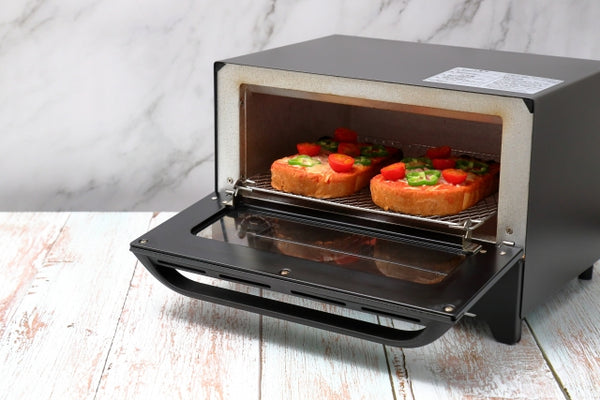A Guide to Japanese Ovens

Imagine you're an avid home baker or chef, ready to embark on an exciting move to Japan and host delightful dinner parties abroad -- but wait! Your new home may not be equipped with the conventional ovens you're accustomed to. In fact, it's uncommon for Japanese homes to have a typical oven due to the incredibly high cost per square meter of land. Housing in Japan tends to be compact, making ovens a luxury appliance. Fret not, though, as the wide range of ovens available in various sizes, functionalities, and price points means there is at least one that is sure to fit your needs.
Microwave Ovens

Microwave ovens are incredibly popular in Japanese homes because of their multi-purpose use. Both large and small versions come pre-programmed with microwave, bake, and toast functions. Large versions also come with extra features like grill and steam that can be used to perform cooking tasks like heating up sake or chawanmushi (steamed egg custard). One difference between small and large ovens is how high the temperature can be set, with small ones maxing out at about 150°C (302°F) and larger ones maxing out at 200°C (392°F). Baking in these ovens involves trial and error because Celsius and Fahrenheit do not convert exactly.
While these ovens seem to do it all, there are, of course, some caveats. Because these ovens are designed to help you save on electricity, recipes that involve reducing the temperature midway cannot be executed without canceling the cooking time and resetting it with a lower temperature and new cook time. When it comes to pre-heating, it is recommended to wait until you are ready to place your food in the oven, because if the oven sits idle for about 10 minutes, it will automatically shut off. Additionally, although larger models have space for two trays, not all are designed to actually cook two trays of food at once. Models that can cook two trays simultaneously are usually more expensive. Regarding price, a small microwave oven usually starts at about 10,000 yen, whereas larger models range from 20,000 yen and up.
Toaster Ovens

In Japan, standard toasters are not as common as toaster ovens. Toaster ovens tend to be more affordable than microwave ovens, starting at about 3,000 yen and up. They are great for toasting bread, pastries, and pizza. Surprisingly, they can also be used to bake small batches of cookies. Toaster ovens are also handy for grilling fish and reheating deep-fried food. However, they are not insulated as well as a typical oven so temperature control tends to be less precise.
Fish Grill/Oven

Gas stoves in Japanese homes are often fitted with a fish grill that resembles a mini oven. The unit itself heats up fairly quickly and can reach high temperatures up to 300°C (570°F). In a standard fish grill, there is enough space to grill several pieces of fish, toast a couple of slices of bread, or cook other small or flat items like steak and vegetables. It's also an excellent way to reheat food that was once crispy.
There are three types of fish grills that can be found at three different price points. The cheapest Japanese fish grills have a heat source on the top of the grill, but not on the bottom. They also need to be filled with water before use, which helps prevent your food from sticking to the grill. One disadvantage to these grills is that they take longer to heat up and can be a little messier to clean. You will also need to flip your food midway through cooking. The middle-tier fish grill will only have the heat source on the top of the grill, but no water drawer. You’ll still need to flip your food halfway, but cleanup will be much easier. The grills at the highest price point have both bottom and top burners and no water drawer. The one drawback is that if you are new to using these types of grills, it can be easy to overcook your food due to the multiple heat sources.
Overall, while the lack of traditional ovens might present a challenge, Japan offers a variety of alternative ovens that cater to different needs and preferences. Embrace the versatility of microwave ovens, the practicality of toaster ovens, and the convenience of the fish grill/oven, and you'll be able to cook anything in your normal repertoire -- and maybe a few new dishes too.
About the author:
 Samantha Kwok
Samantha KwokSamantha is currently a 5th-year JET in Okinawa, originally from Hawaii. She has been somewhat connected to Japanese culture her whole life despite being Chinese American. She's had the privilege of traveling to Japan and experiencing Japanese culture at a young age. She loves food and is always looking to try new places. When she is not working or out eating, she is an avid baker at home and has been known to feed her colleagues an excessive amount of baked goods.




